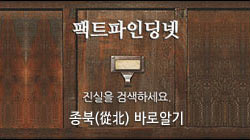by Kim Pyung-woo (Attorney and former head of Korean Bar Association)
The modern version of the impeachment process dates back to the U.S. constitution drafted 240 years ago. The target of impeachment was a federal judge whose tenure was guaranteed for life. There have been 19 impeachment cases in the 240-year history of the U.S. and 15 of them involved judges. And eight of the impeachment motions were upheld by the U.S. senate and all of them involved judges.
The impeachment of a president differs from the impeachment of a judge in many ways. First, the U.S. president serves a four-year, two-term presidency and the leader is elected by an electoral college. And it goes against the principle of separating legal, administrative, and judicial powers for parliament to drive out the president through impeachment. However, an admissible exception is when a president is accused of violating the constitution or law requiring lawmakers to investigate the allegations and pursue impeachment if necessary.
During the 240-year history of the U.S. constitution, no president has ever been driven out of office through impeachment. The U.S. has a bicameral legislature consisting of the House of Representatives and the Senate. The House of Representatives files the charges and the Senate reviews them. The indictment or impeachment by the House of Representatives is tabled if a majority of its members support it. The impeachment motion must be supported by two thirds of its members in order to be ratified. The Senate is composed of 100 members (each of the 50 U.S. states elects two senators serving six-year terms). The Senate's handling of an impeachment bill is a judicial rather than a traditional legislative process. The U.S. Supreme Court justice serves as the judge in an impeachment trial. The head of the judiciary committee at the House of Representatives represents the group indicting the president. All members of the Senate serve the jury. A decision is put to vote and no written reason is drafted explaining the results of the ballot. The minutes of the trial are also left undrafted. Only a guilty or innocent ruling is made and the decision is final. The president cannot appeal the ruling or seek to have it nullified. Some Latin American countries, such as Brazil, allow impeached presidents to turn to the courts to nullify the decision.
Until now, two U.S. presidents have faced impeachment. They were Andrew Johnson, the 17th U.S. president, and Bill Clinton, the 42nd president. (President Richard Nixon resigned just before he faced impeachment.) Johnson came from the southern states and was appointed as vice president as a means to bring Americans together when Abraham Lincoln was re-elected president by a wide margin in 1864 after winning the Civil War. But Lincoln was assassinated 40 days after his re-election win and Johnson became president.
Johnson clashed frequently with the majority Republican Party senators who pursued hardline policies against the southern states following the Civil War. During that time, the Senate created a special law limiting the president's authority to fire state secretaries. According to the U.S. constitution, the president has the right to appoint and sack state secretaries. As a result, the law drafted by the Senate violated the constitution. Johnson sacked his secretary of war to protest the Senate's move. The House of Representatives viewed the president's decision as a direct challenge to the authority of the Senate and passed a bill seeking to impeach Johnson in February of 1868. The decision by lawmakers was widely expected (in a similar case, former president Roh Moo-hyun ignored warnings by the National Election Commission as well as calls by the National Assembly to apologize for his comments calling on voters to support his party, prompting lawmakers to impeach him).
In March of 1868, the impeachment bill was rejected by the Senate with 35 against it and 19 supporting it, which failed to meet the two-thirds needed for a quorum. Johnson was highly unpopular and did not run for office again, but the ruling proved that his right to appoint state secretaries and his policies concerning post-war American rehabilitation were deemed to fit the principles of the U.S. constitution.
And Clinton faced impeachment 130 years later. Clinton was re-elected president in 1996 winning a huge majority of votes after winning praise from the U.S. public for resolving the fiscal deficit and reviving the American economy. After his re-election, Clinton was found to have engaged in sex several times with a female White House intern in her early 20s named Monica Lewinsky. If Lewinsky had filed charges, the case would have become a blatant case of sexual assault or harassment. Lewinsky did not file charges, but the fact that an incumbent and married president engaged in romantic trysts with a young intern during his official duty was enough to enrage Americans who still adhere to Puritan values.
At that time, another woman named Paula Jones filed sexual harassment charges against Clinton requiring him to make a deposition. The scandal was leaked to the news media after independent counsel Kenneth Starr submitted a report accusing Clinton of perjury for claiming he did not have sex with Lewinsky. Using this as evidence, the Republican dominated House of Representatives accused Clinton of perjury and obstruction of justice. In February of 1999, the Senate rejected the charges with 45 members supporting and 55 against the perjury charges and 50 supporting and 50 against the charge of obstructing justice. The vote results failed to meet the 67 ballots in favor necessary for a quorum. And a large number of the 55 Republican representatives voted against impeaching Clinton.
The U.S. Senate does not record the reasons for its decisions regarding impeachment trials so there is no way of telling why the impeachment bill targeting Clinton was rejected. Legal experts believe that sexual relations with Lewinsky constitutes the president's privacy and does not constitute grounds for impeachment. There is one point that we must be aware of and that is the fact that the U.S. Senate is composed of a large number of veteran politicians (the tenure of a representative is two years, but the term is six years for senators). Most senators are seasoned politicians who have been re-elected several times. They are not easily incited by public sentiment as the House of Representatives and media. If Clinton was impeached, then vice president Al Gore, a Democrat, would have assumed the presidency. The Republican Party would not have gained control right away. It would have been no benefit for the U.S. if senators impeached Clinton for being a liar in spite of his achievements in reviving the American economy. Most senators sided with practical interests rather than moral obligations and chose national interests over popularity. As a result, Clinton finished his presidential tenure and remains among the most popular ex-presidents.
There are differences between what took place in the U.S. and in Korea. First, there is a difference in the number of impeachments that were pursued and which officials were targeted. In the U.S., 15 out of 19 officials who faced impeachment were judges, while two were presidents. Korea adopted the impeachment process since its establishment, but no judge or another high-ranking official has ever been impeached. The impeachment process in Korea has only been used twice and both targeting presidents. President Roh Moo-hyun faced impeachment in 2004 and President Park Geun-hye in 2016. The only similarity is that two presidents have faced impeachment in both countries.
But two U.S. presidents faced impeachment during the country's 240-year history, while two leaders faced impeachment in Korea over the span of only 70 years. Moreover, the first and second impeachment proceedings in the U.S. had a 130-year time gap, but just 12 years in Korea. Two out of 45 U.S. presidents faced impeachment compared to two out of 11 in Korea. Considering the fact that Korea's Constitution gained official status in 1987, the ratio of impeachment stands at 33 percent with two out of six presidents facing that fate. That makes Korea rank among the top in the world when it comes to the frequency of impeaching its presidents. This is nothing to be proud of. This shows just how unstable Korean politics is and illustrates the intensity of factional strife here.
What is interesting is the fact that both instances of impeachment in Korea took place when the National Assembly was dominated by the opposition. It appears that such circumstances foment an environment that promotes impeachment proceedings. Another interesting fact is that both Roh and Park are mavericks. Roh received only a high school education, while Park is a single woman. It appears that outdated and discriminatory social standards were at play in both instances.
Jan. 9, 2017
(1) 한국의 졸속 탄핵, 미국의 탄핵과 어떤 점이 다른가
근대적인 탄핵은 240년 전 미국 헌법으로부터 시작되었다. 主대상은 終身職(종신직)인 연방 법관이었다. 240년 미국 역사에서 탄핵소추가 총 19건인데 이중 15명이 법관이다. 上院에서 탄핵이 가결된 게 총 8건인데 전부 법관이다.
대통령의 탄핵은 법관의 탄핵과 다르게 볼 점이 많다. 우선, 미국 대통령은 4년 중임제이고 미국 국민이, 더 엄밀히 말하면 선거인단이 선출한다. 議會가 탄핵으로 쫓아내는 것은 三權分立(삼권분립)의 원칙에 맞지 않는다. 다만, 대통령이 헌법이나 법률을 위반하였을 때 의회가 대통령을 조사하고, 탄핵할 수 있는 예외가 인정된다.
240년의 미국 헌정사에서 대통령이 탄핵으로 쫓겨난 사례는 아직 없다. 미국은 의회가 上院(상원)과 下院(하원) 두 개로 구성되는 兩院制(양원제)이다. 下院이 고발하고 上院이 재판한다. 下院의 고발, 즉 탄핵소추는 下院에서 과반수 의원의 찬성으로 성립된다. 上院의 탄핵결정은 재적 3분의 2가 찬성하여야 의결된다. 上院은 의원 100명으로 구성된 의회이다(상원의원은 임기 6년으로 각 주에서 2명씩 선출한다. 현재는 50개 주이므로 정원이 100명이다). 上院의 탄핵 절차는 보통의 입법 절차와 달리 재판 절차이다. 재판장은 연방 대법원의 대법원장이 맡는다. 下院의 법사위원장이 고발인 대표이다. 상원의원은 全員(전원)이 배심원이다. 결정은 표결로 하는데 표결 이유는 밝히지 않는다. 판결문도 작성되지 않는다. 유죄냐 무죄냐 결론만 내린다. 판결은 최종이다. 법원에 취소청구나 上訴(상소)할 수 없다(南美 국가들 중 예컨대, 브라질처럼 법원에 취소 청구를 할 수 있는 나라도 있다).
지금까지 미국에서는 두 명의 대통령이 下院의 고발로 上院에서 탄핵 재판을 받았는데, 17대 앤드루 존슨과 42대 빌 클린턴 대통령이다(닉슨 대통령은 下院의 고발 직전에 사임하였다). 존슨은 남부 출신인데 미국의 16대 대통령 링컨이 남북전쟁을 성공적으로 끝내고, 1864년 압도적인 표차로 再選(재선)되었을 때 남북 화합 차원에서 부통령으로 발탁되었다. 그런데 링컨이 재선 직후 40여 일만에 암살되는 바람에 대통령직을 승계하였다.
남북전쟁의 수습책을 놓고 남부에 대하여 강경책을 주장한 議會(의회)의 다수파 공화당 정치인들과 의견이 맞지 않아 대립이 잦던 중, 의회가 대통령의 장관 해임권을 제한하는 특별입법을 만들었다. 헌법상 장관 인사권은 대통령한테 있으므로 의회의 입법은 헌법에 위반되는 것이었다. 존슨 대통령은 의회의 횡포에 맞서 전쟁장관을 해임하였다. 의회의 권위에 대한 정면도전으로 받아들인 下院에서 1868년 2월 존슨 대통령을 탄핵소추한 것은 어떻게 보면 당연하다(노무현 대통령이 선관위의 경고를 무시하고, 국회의 사과 요구도 무시하고 선거 관련 발언을 계속하여 국회의 탄핵소추를 유발한 것과 닮은 점이 있다).
1868년 3월, 상원에서 의결 정족수 3분의 2에 한 표 부족한 35대 19로 탄핵고발이 기각되었다. 존슨은 재임 당시 국민의 인기가 높지 않아 再選에 나오지도 못했지만, 그의 戰後(전후) 남부 復舊(복구) 정책과 장관 임명권에 대한 헌법 견해는 모두 옳았다는 것이 後世(후세)에 증명되었다.
그후 130년이 지난 1998년 빌 클린턴 대통령이 탄핵소추를 받았다. 클린턴 대통령은 미국의 재정적자를 해소하고 경제를 되살린 대통령으로 높은 평가를 받아 1996년 압도적으로 再選되었다. 클린턴은 再選된 후, 20대 초반의 백악관 인턴 르윈스키와 수차례의 성적행위를 즐긴 것이 드러났다. 르윈스키가 고발했으면 변명의 여지가 없는 파렴치한 성추행 내지 성희롱(sexual assault or sexual harassment)이다. 비록 르윈스키가 고발하지 않았지만, 결혼한 대통령이 집무 시간 중 젊은 인턴직원을 데리고 놀았다는 건 청교도 정신이 강하게 남아있는 미국인들에게 있어 그냥 넘어갈 수 없는 사안이었다.
때마침 클린턴이 다른 여성(폴 존스)으로부터 성희롱 사건으로 고소를 당해 선서증언진술(deposition)을 하면서 자기는 르윈스키와 성관계(sexual relationship)를 한 적이 없다고 증언한 것을 가지고 스타(Starr) 특별검사가 僞證(위증)으로 단죄하는 보고서를 정부에 제출하면서 언론에 유출시켰다. 이를 증거로 공화당이 다수인 하원에서 클린턴을 僞證(위증) 및 사법방해로 上院에 고발하였다. 上院은 1999년 2월, 위증 혐의는 45 對 55로, 사법방해 혐의는 50 對 50으로 모두 부결하였다. 의결 정족수인 67표에 크게 미달하는 결과였다. 55명의 공화당 의원 중에서도 상당수가 탄핵에 반대했다.
미국 상원은 결정문이나 결정이유를 쓰지 않기 때문에 우리는 上院이 왜 부결하였는지 그 이유를 알 수 없다. 평론가들이 분석한 바로는 클린턴의 행위가 위법에 해당하나 르윈스키와의 성관계는 사생활이므로 굳이 탄핵할 가치가 없다고 다수의 상원의원들이 판단했을 것이라는 추측이다. 여기서 유의할 점이 하나 있다. 미국의 上院의원들은 우리나라의 憲裁 재판관들과 달라서 주로 원로 정치인들이 많다(미국의 하원의원은 임기가 2년인데 반해 상원의원은 임기가 6년이다. 대부분 再選 이상의 노련한 정치인들이다). 下院의원이나, 언론처럼 大衆(대중)의 일시적 기분에 끌려가지 않는다. 클린턴이 탄핵으로 쫓겨나면 같은 민주당의 부통령 엘 고어가 대통령이 된다. 공화당이 당장 집권하는 것도 아닌 상황이었다. 미국의 경제를 잘 살린 클린턴 대통령을 거짓말쟁이라고 쫓아내서 미국의 國益(국익)에 도움 될 게 없다. 대부분의 상원의원들이 명분보다 실리를, 인기보다는 國益을 선택한 것이라고 본다. 결국, 클린턴은 임기를 잘 마쳤고 지금도 미국에서 인기 있는 前職(전직) 대통령 중 한 명이다.
한국이 미국과 다른 점을 본다. 먼저 탄핵의 대상과 횟수가 다르다. 미국은 19명의 탄핵소추 중 15명이 법관이다. 대통령은 두 명이다. 한국은 건국 때부터 탄핵제도를 도입했지만 법관이나 다른 고위직이 탄핵소추된 사례는 없다. 오로지 대통령 탄핵에만 두 번 이용되었다. 2004년 노무현 前 대통령에 이어서 2012년 박근혜 대통령이 탄핵소추되었다. 대통령 탄핵횟수가 미국과 마찬가지로 두 번인 점은 같다.
그러나 미국은 240년 建國史(건국사)에서 두 번이고, 한국은 70년 建國史에서 두 번이다. 더욱이 미국은 첫 번째 탄핵과 두 번째 탄핵의 간격이 약 130년이지만, 한국은 단 12년이다. 미국은 45명의 대통령 중 두 명인데, 한국은 11명의 대통령 중 두 명이다. 憲政(헌정)체제가 본격화된 1987년 이후로 따지면 6명의 대통령 중 두 명으로 탄핵률이 약 33%이다. 한국은 全세계에서 가장 대통령 탄핵이 잦은 나라 중 하나다. 좋아할 일이 아니다. 세계에서 가장 정치가 불안정한 나라, 黨派(당파)싸움이 가장 심한 나라라는 증거이다.
재미있는 점은 한국의 대통령 탄핵은 두 번 모두 국회가 與小野大(여소야대)였다는 점이다. 국회가 與小野大되면 예외 없이 대통령을 탄핵소추하는 징크스 같은 게 있는 것 같다. 또 하나는 두 대통령이 다 政界(정계)의 소수파이다. 노무현 前 대통령은 高卒(고졸)이었고, 朴 대통령은 여성이다. 소수파를 무시하는 前近代的(전근대적)인 신분차별의 문화가 크게 작용하는 것 같다.
2017. 1. 9. 金平祐












 Kim Pyung-woo
Kim Pyung-woo








 트위터
트위터 페이스북
페이스북 네이버
네이버




























